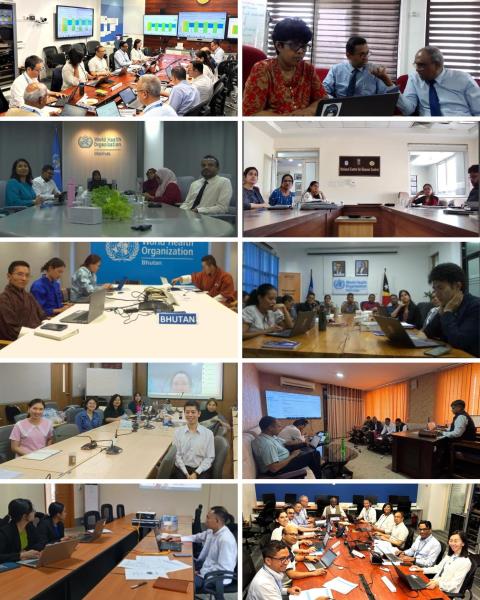
SAPHIRE 2025: Annual Regional Simulation Exercise to strengthen IHR Event Communication in the WHO South-East Asia region
Risk Analytics and Action Reviews (RAR), WHO Health Emergencies Programme
August 8, 2025
South-East Asia Region
On 8 July 2025, more than 190 public health and food safety experts across the WHO South-East Asia Region logged on to participate in the third occurrence of the region’s flagship IHR simulation exercise — SAPHIRE 2025 (South-East Asia Regional Practice of All-Hazard IHR Event Communication). Held over four hours from 9:00 AM to 1:00 PM IST, the real-time exercise simulated the response to a potential public health emergency of international concern (PHEIC) stemming from a food safety incident.
SAPHIRE is part of the WHO Regional Office’s ongoing commitment to strengthening timely and effective communication under the International Health Regulations (IHR 2005). This year’s exercise was based on recommendations from SAPHIRE 2024 and focused on a food safety event — an area several Member States had identified as a priority. It brought together National IHR Focal Points (NFPs), INFOSAN Emergency Contact Points (ECPs), and WHO IHR Contact Points at regional and national levels to practice and improve event communication in a controlled yet realistic environment. The scenario required real-time decision-making, drafting and sharing of required information products, coordination between sectors, and application of the IHR Annex 2 decision instrument and INFOSAN notification criteria.
Conducted via email-based injects and followed by a “hot wash” debrief using a virtual platform, the exercise tested not only technical knowledge but also operational readiness. Country teams practised using institutional communication channels, action logs, and reporting forms, and received feedback on their performance. Participants reported improvements in internal SOPs, clearer communication pathways, more familiarity with IHR procedures compared to previous iterations of the exercise. Improved access to the Event Information Site (EIS) and onboarding of non-health actors were also noted.
The exercise concluded with strong calls from participants to replicate similar simulations at the national level. In addition to the quick feedback collected from all participants during the hotwash using an online survey tool, country-level feedback has also been obtained using structured self-review and feedback tools, especially to identify and focus on areas for future capacity building at the country level. The secretariat is analysing the response time and the appropriateness and quality of the response to the exercise injects, and this year country country-specific feedback reports are being developed to be shared confidentially with each IHR National Focal Point as requested, in addition to the overall report on the exercise regularly published.
Dr Nilesh Buddha, Regional Emergency Director, WHO South-East Asia, emphasized in his closing remarks that “SAPHIRE 2025 marked a meaningful evolution by simulating a food safety-related event, reinforcing the linkage between IHR NFPs and INFOSAN ECPs. Participants demonstrated strong cross-sectoral coordination, flexibility, and improved clarity of roles under IHR.” SAPHIRE is now firmly embedded as an annual regional practice and continues to foster a culture of preparedness and collaborative response in line with IHR (2005) obligations and its amendments in 2024.
Dr Stella Chungong, Director, Health Emergency Preparedness, WHO – Headquarters highlighted that “SAPHIRE 2025 demonstrates how strong regional leadership, backed by cross-regional technical collaboration, can elevate global preparedness. The South-East Asia Regional Office has shown what it means to operationalise the International Health Regulations in a meaningful, practice-driven way. This initiative exemplifies the One WHO approach — where our collective strength lies in unified action across all levels of the Organization.”